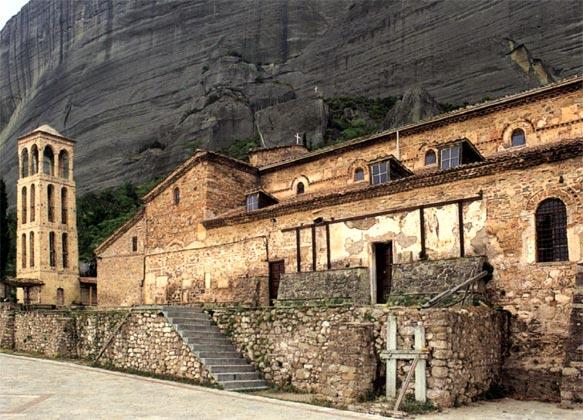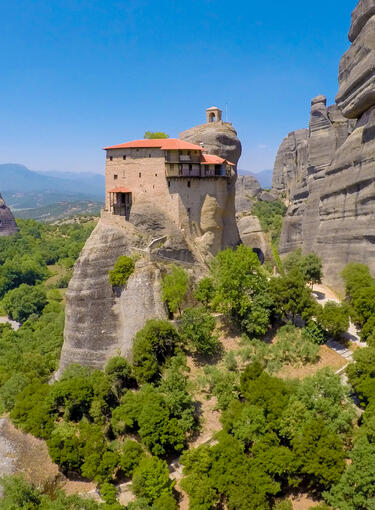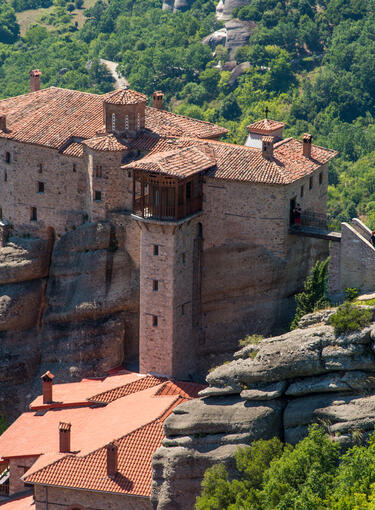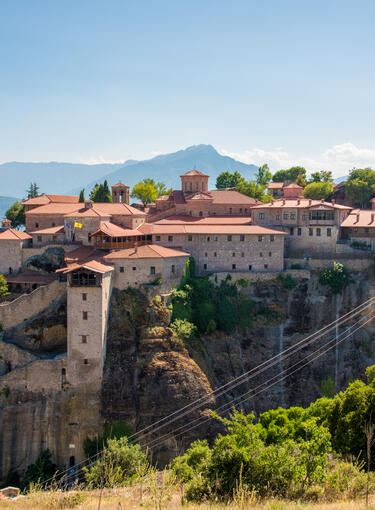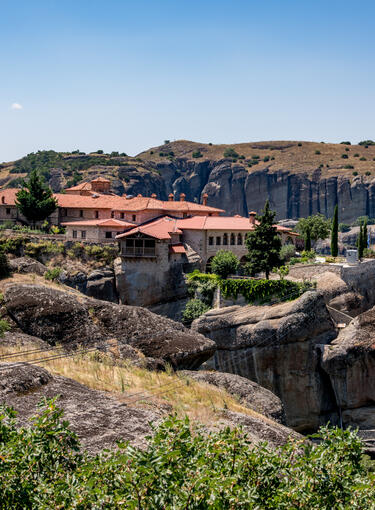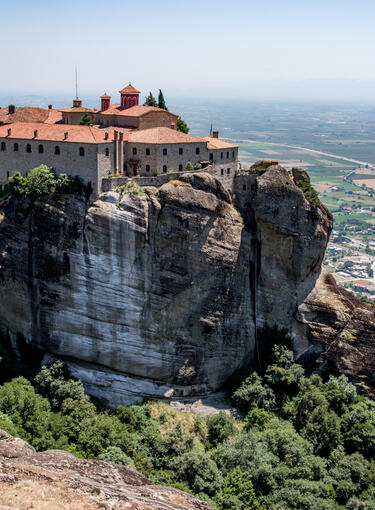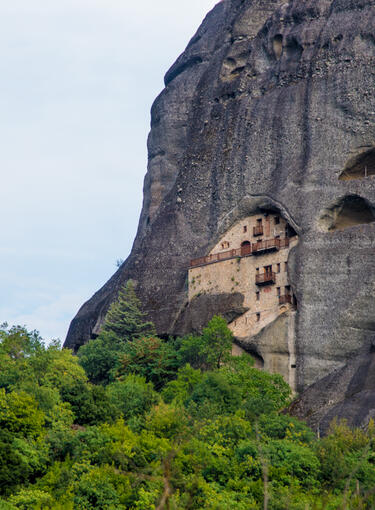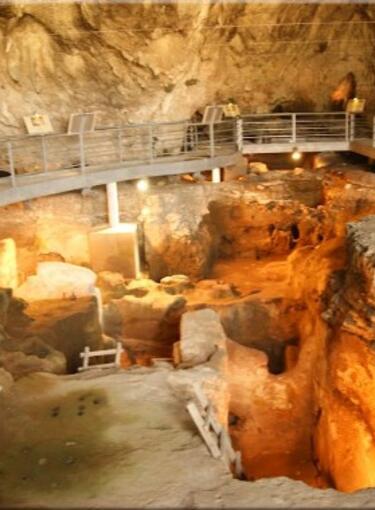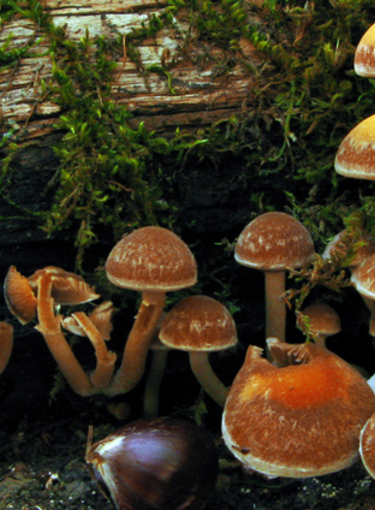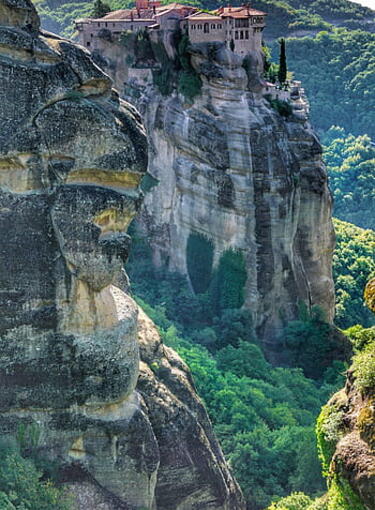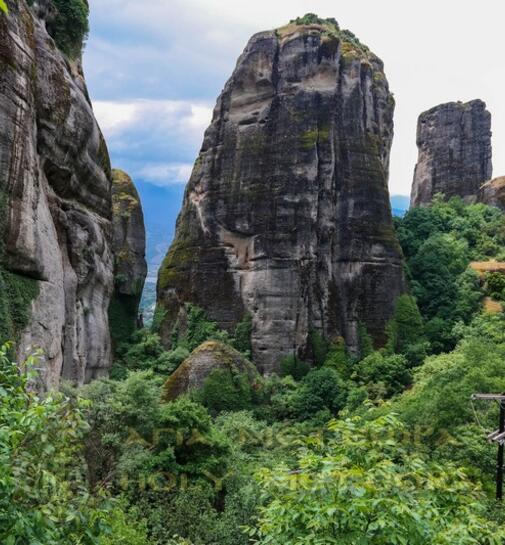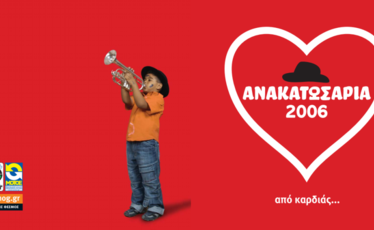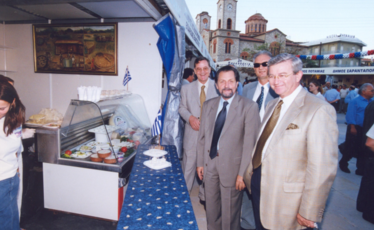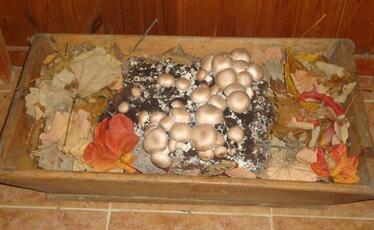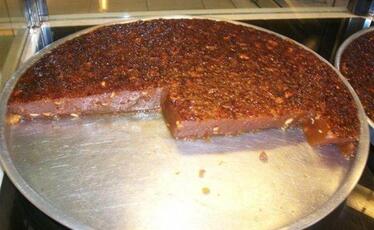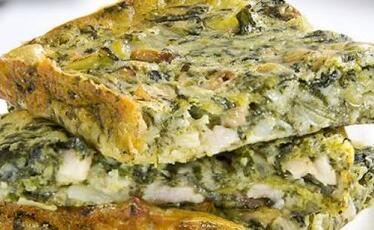Even though in the city of Kalambaka survive several small post Byzantine churches with interesting wall paintings and wooden carved screens, the most important of all is considered the Byzantine church of Koimisis Theotokou (Dormition of Virgin Mary), the cathedral church of the bishopric of Stagoi with great importance to Byzantine and post Byzantine art. It is a large three-aisled basilica with the middle aisle elevated, and dates from the Middle Byzantine Period. The narthex communicates with the main church through a tribelon opening.
The building ends on the east at three semi-circular arches and the aisles are separated with the mixed system, that is between the pillars there is a column. The proportions are oblong but this is due to the fact that it was built over an early Christian basilica, which has influenced the form of the façade. As a matter of fact, in recent researches it was ascertained that the pillars and the columns that separate the aisles, as well as the external walls, coincide with the colonnades and the external walls of an early Christian three-aisled basilica, from which survive parts from the mosaic decoration of the floor.
The basilica of Kalambaka –as the church is mostly known– must have been built in the 10th century or the beginning of the 11th century, over the ruins of the early Christian church, and then –in the Byzantine period, in the 16th and the 19th century– it saw successive repairs that have brought many alterations and modifications in the morphological and constructive elements.
On the eastern edge of the southern aisle some important wall paintings survive –full figures of saints and on medallions– of the 12th century, while the rest of the church is richly decorated with scenes and series of full figures of saints that date from 1573. These latter wall paintings, according to the inscription, are the works of the priest Kiriazis and Neophitos, who was the son of the famous painter from Crete, Theofanis.
Characteristic is the large and tall pulpit, which is the only surviving example of a pulpit in the middle of the church. It is made of marble and has been recreated mainly from the pieces of the pulpit of the early Christian basilica. At the church also survive a beautiful wooden carved screen and some important portable icons. Finally, we should mention that on the northern wall of the esonarthex is a Byzantine imperial document –chrysobull– of 1336 with which emperor Andronikos III grants privileges and confirms the boundaries of the bishopric of Stagoi and a patriarchal document –sigil– which was issued for the same purpose in 1393 by the patriarch Arsenios.
Informations
Additional
Date:
10th-11th century
Season:
Byzantine
Holy Metropolis:
Stagi and Meteora
Under the Supervision of:
Archaeological Service of Trikala
Address:
Kalambaka
Schedule:
Everyday except 13:00 – 15:00


